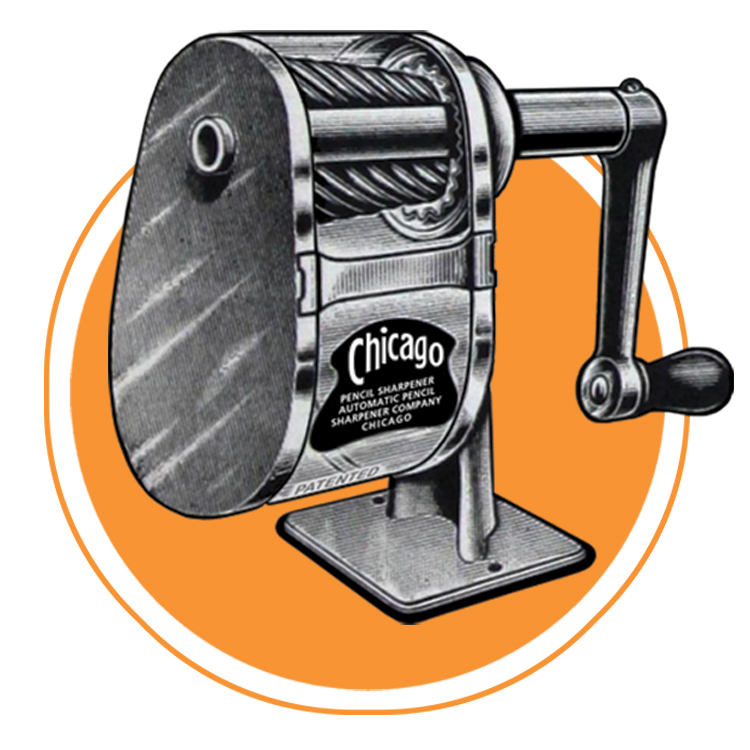
Museum Artifact: No. 4097 Maple Chairside Table with Marble Top, 1960s
Made By: Alonzi Furniture Company, 1840 W. Hubbard St., Chicago, IL [West Town]
Donated By: Fred Alonzi
“The charm of Alonzi Furniture is readily apparent. You don’t have to tell your trade it is beautiful—they
can see it themselves. . . The finish—the design—the quality of the material tells them this. And the workmanship clinches the argument. Years of conscientious manufacture has given the name of Alonzi a recognized stamp of individualism.” Alonzi Furniture advertisement, 1927
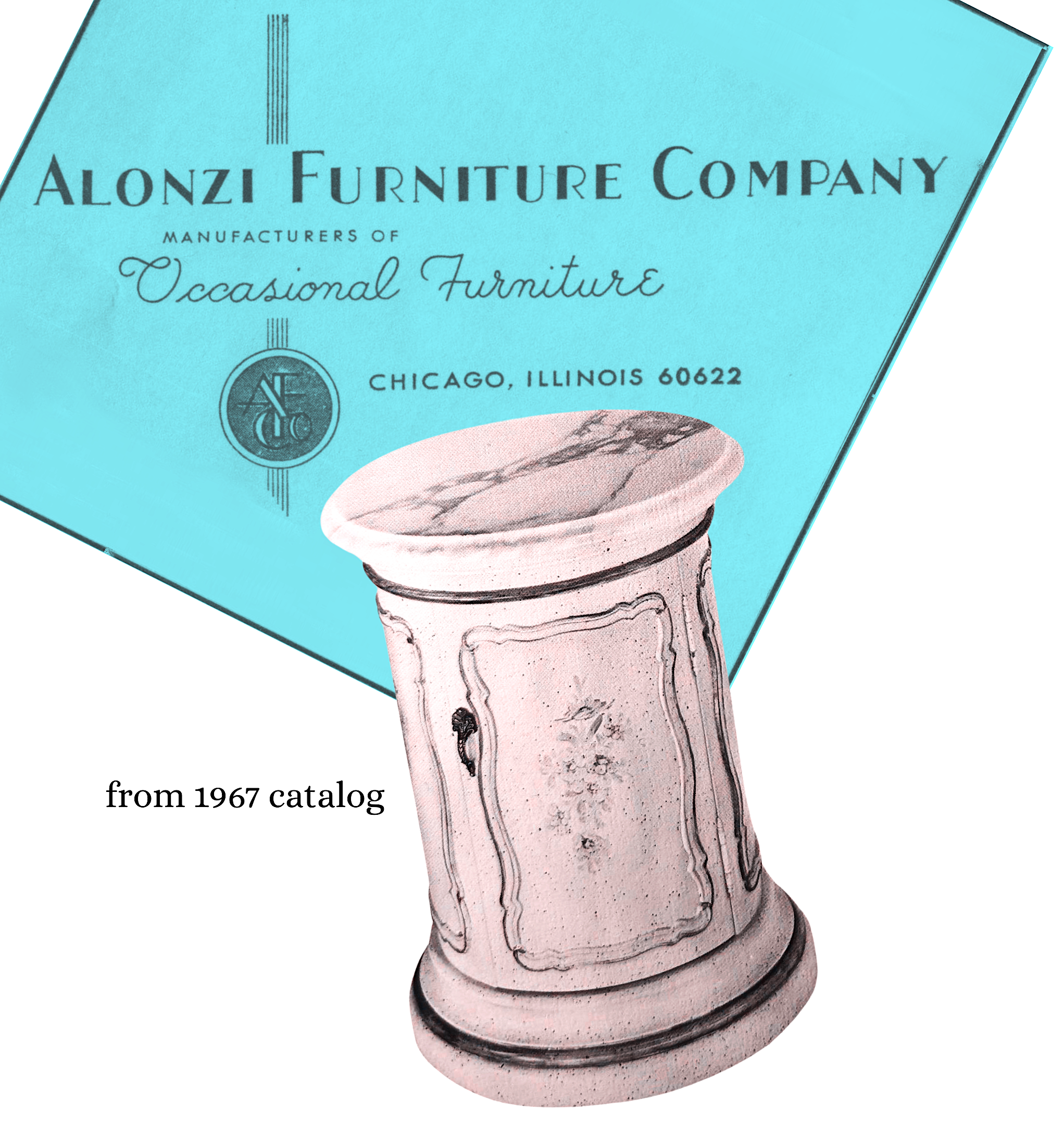
The company history below was provided by Fred Alonzi. We’ll be adding more details and photos in the near future.
Alonzi Furniture Company began operations in Chicago in 1916. The company was founded by three brothers—Loreto, Carlo and Anthony Alonzi. They were born in Sora, Italy, in the 1890s into a family with a long history as “contadini,” or peasant farmers. Each brother immigrated to the United States when they turned 17. Loreto, the oldest of the three, only attended school through the third grade and then was apprenticed to a local carpenter. He immigrated to the USA in 1907 by himself, with no English skills, and little money in his pocket. He made his way to the near west side of Chicago by 1909 and got a job as a cobbler.
Loreto Alonzi met his future wife Eva Vignola (Vignola is another notable name in the Chicago furniture industry) at Assumption Church on Illinois Street. He was determined to marry Eva, but he was dissatisfied with a cobbler’s pay. So, Loreto began building furniture, storing his creations in a shed. Once the shed was full, he felt confident enough to share his work with the man he hoped would be his future father-in-law, Saverio Vignola. Saverio was so impressed by the furniture that not only did he allow Loreto to marry his daughter, but he also invested his life savings to help Loreto start his own furniture business.
When Alonzi Furniture was organized in 1916, Chicago had already become the furniture manufacturing capital of the country. The city was known primarily for parlor furniture—mostly upholstered sofas, settees and chairs. So, to stand out, Alonzi Furniture found a niche as a maker of “novelty” furniture—small pieces for varied use such as tea wagons, stools, benches, muffin stands, small tables, and even humidors. These pieces were designed to complement the larger parlor furniture that was already being produced by well established local manufacturers like Tobey, Tonk, and Karpen.
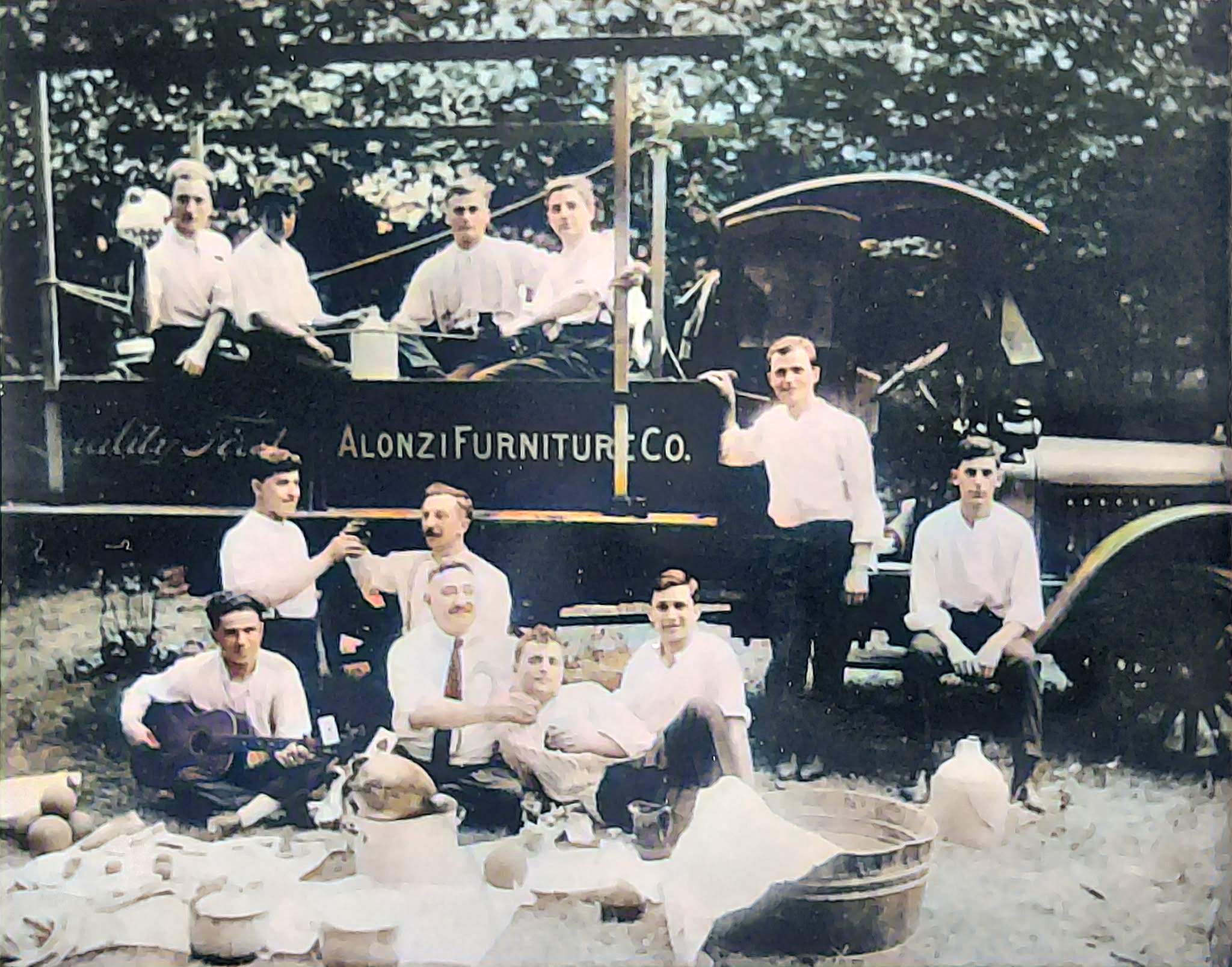
[The original Alonzi Furniture team at a company picnic, circa 1918.]
Working from Saverio’s garage at 453 Carpenter Street on the west side, the Alonzi brothers met with quick success. Within three years they could afford a truck and a showroom at the renowned Chicago Furniture Exhibition Building on Michigan Ave. In 1920, they purchased a three-story factory at 1840 W. Austin Ave (now Hubbard St and the present day location of Salvage One vintage furnishings and event space) and in 1923 became an original tenant at the landmark American Furniture Mart at 680 N. Lake Shore Drive.
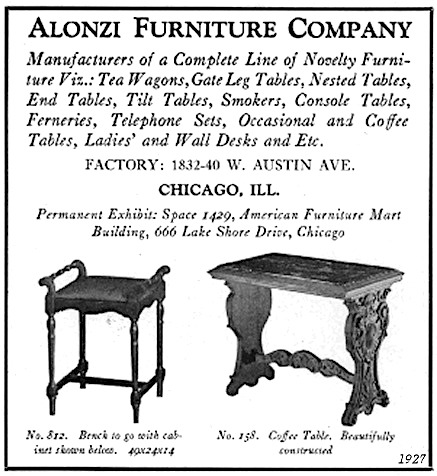 By the late 1920s, Alonzi Furniture began building distinct lines of furniture—a complete set of related pieces using a unifying motif. For instance, a French Provincial line would include cocktail, lamp, and end/side tables as well as matching curio cabinet, commode, mirror and plant stand with which you could decorate an entire living room. At the same time, the skill and craftsmanship reached all new heights in terms of wood carving, marquetry, and finishing as can be seen in their Louis XV period reproductions.
By the late 1920s, Alonzi Furniture began building distinct lines of furniture—a complete set of related pieces using a unifying motif. For instance, a French Provincial line would include cocktail, lamp, and end/side tables as well as matching curio cabinet, commode, mirror and plant stand with which you could decorate an entire living room. At the same time, the skill and craftsmanship reached all new heights in terms of wood carving, marquetry, and finishing as can be seen in their Louis XV period reproductions.
According to the 1984 book Chicago Furniture: Art, Craft & Industry, “the Alonzis divided the work as follows: Loreto, president, was in charge of cabinet making and the machine room; Anthony, vice-president, handled shipping; and Carlo, treasurer, was responsible for the finishing room.”
The business continued to expand its factory even through the Depression and war years, eventually filling almost an entire city block and employing 185 people. Alonzi opened showrooms at furniture marts in Los Angeles, San Francisco, and New York. Loreto also became a director of National Security Bank, a position he or his son held for over 40 years. By 1937, Loreto Alonzi could afford to build a mansion on the shores of Lake Michigan in Kenilworth—a true immigrant success story!
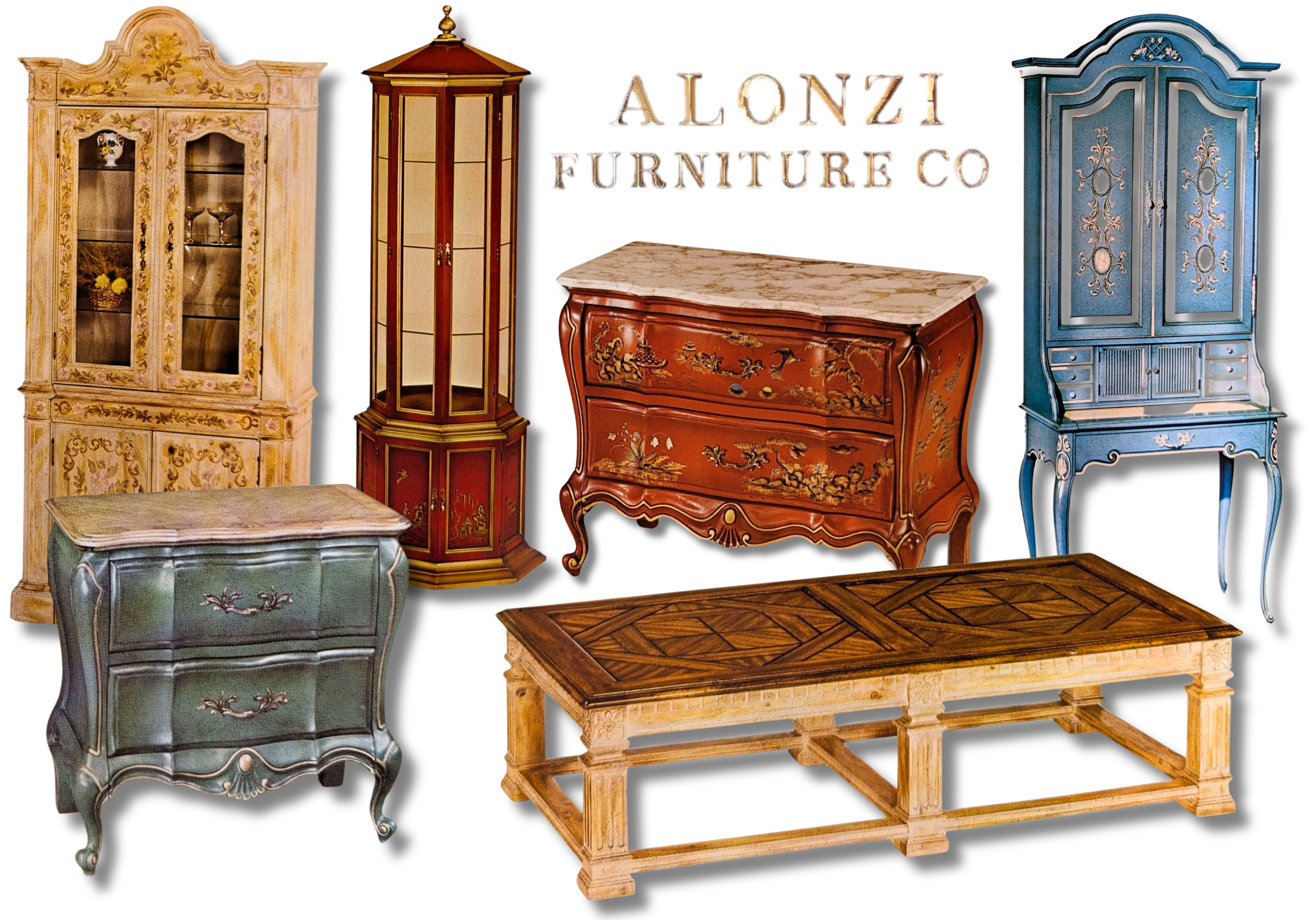
According to Chicago Furniture, “Carlo’s son and namesake joined the firm after World War II and became Loreto’s assistant. Loreto’s son Fritz ran the office, while Anthony’s son Michael assisted in shipping.”
Alonzi Furniture’s legacy stands as the very first furniture manufacturer in Chicago that was owned and operated by Italian immigrants. In fact, it was one of the first manufacturers of any kind in Chicago that was owned and operated by Italian immigrants. For a generation prior to the founding of Alonzi Furniture, Italian immigrants usually only found work as peddlers, cobblers, grocers, barbers, railroad workers, and other low-paid unskilled laborers. Alonzi Furniture became a hub in the Italian community, attracting skilled artisans and craftsmen and providing them with steady, well paid work. By developing this skill and achieving early success, other Italian-owned furniture manufacturers such as Milano, Montalbano, Ambrosino, Sibilano and Venice would blossom. Alonzi Furniture remained a fixture in the community and industry for 62 years until 1978.
More anecdotally, the legacy of Alonzi Furniture is the shared legacy of the vast majority of Italian immigrants who were decidedly NOT (as the ruling political, legal, business, and media class would have you believe—even to this day!) members of the Mafia, nor owned by the Mafia; nor socialists, nor fascists, nor anarchists; nor unskilled, nor uneducated, nor unmotivated. The vast majority of Italian immigrants simply wanted to be accepted as Americans—to participate in, and contribute to, its strength and success—and were willing to work hard and honestly to do so. –Fred Alonzi
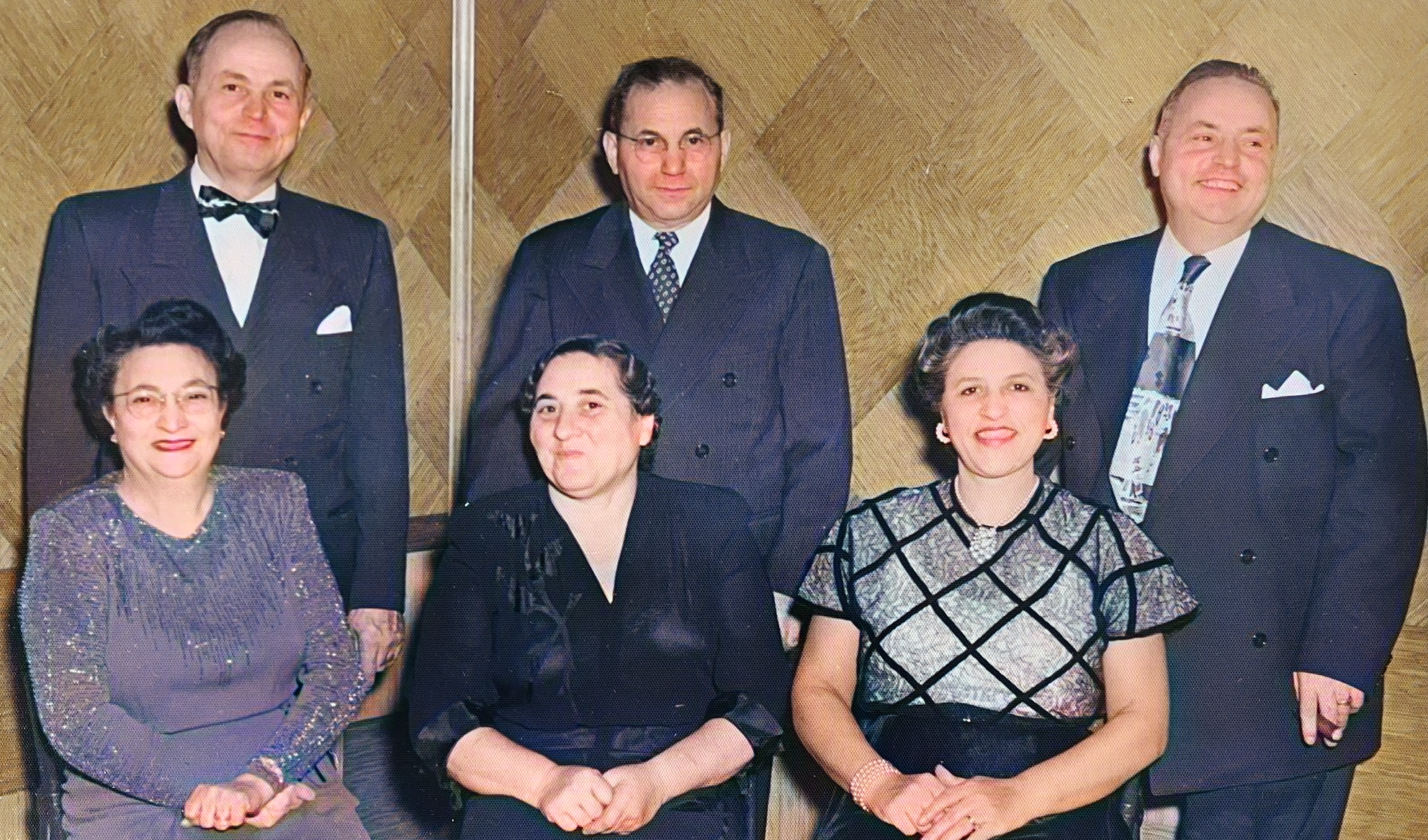
[The three brothers that ran Alonzi Furniture: Loreto, Carlo, and Tony Alonzi with spouses Eva, Jennie, and Josephine, c.1948]
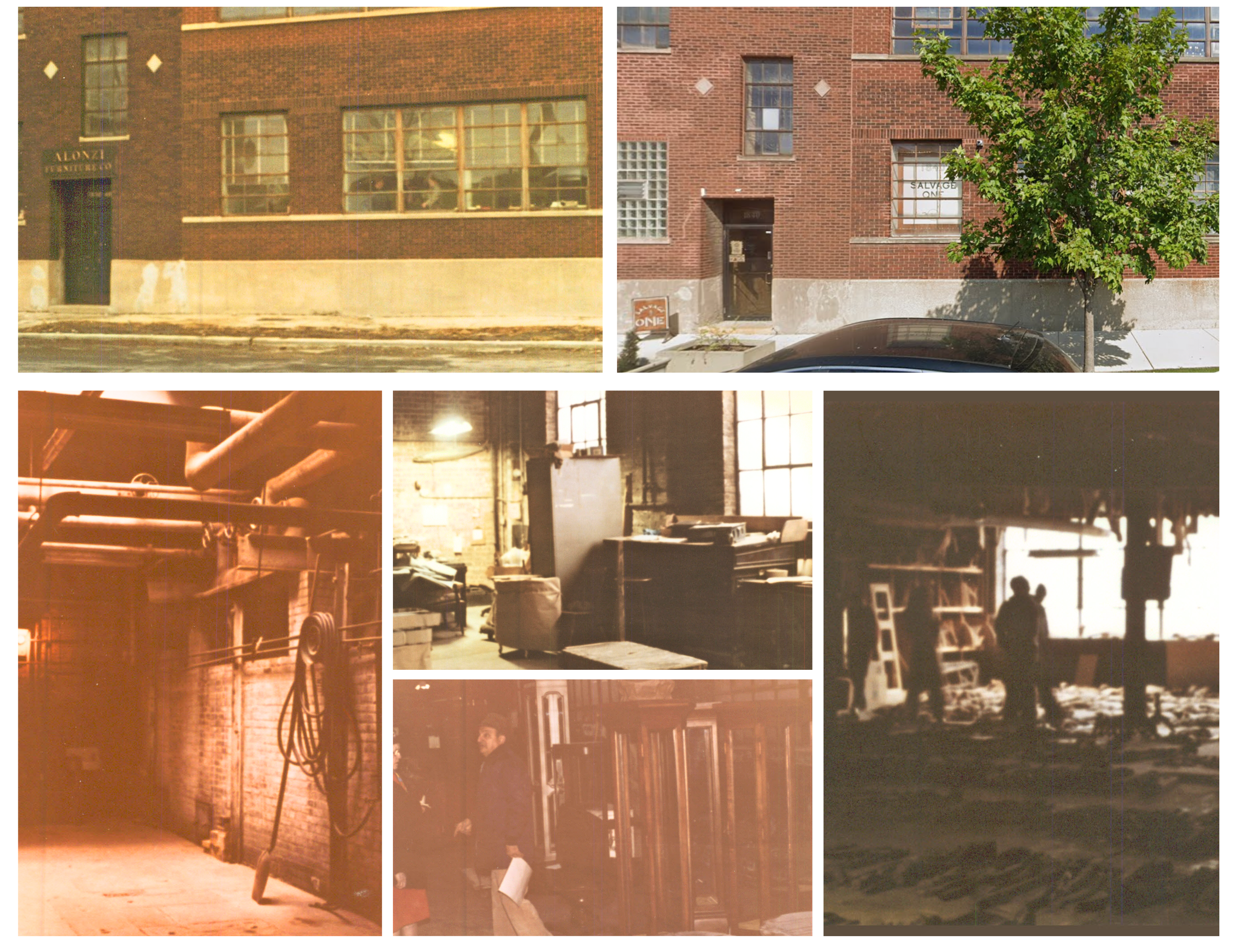
[Images of the exterior (top left) and interior of the Alonzi factory at 1840 W. Hubbard St. in the 1970s. Top right image and below image show the same building in 2025, now owned by Salvage One]
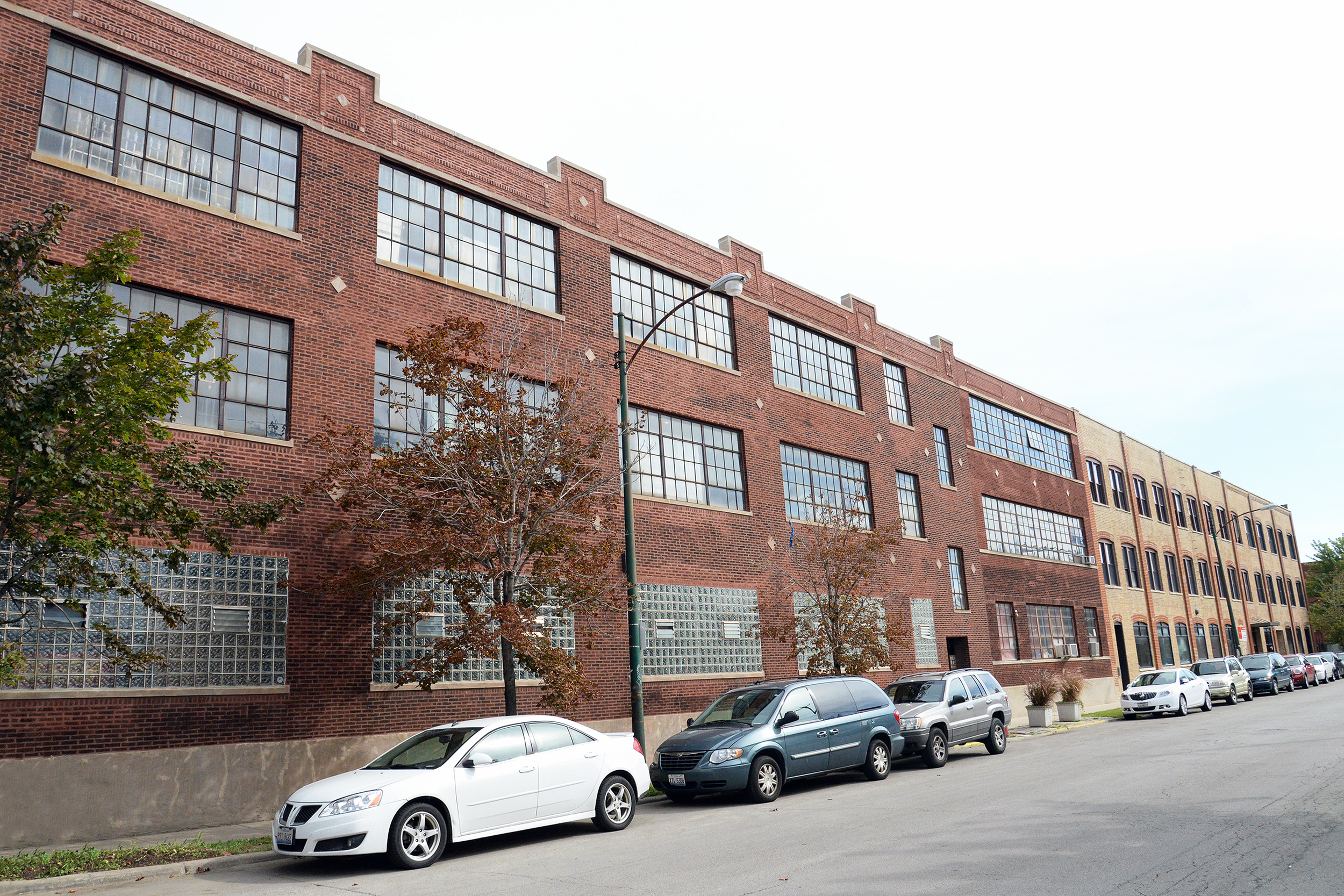
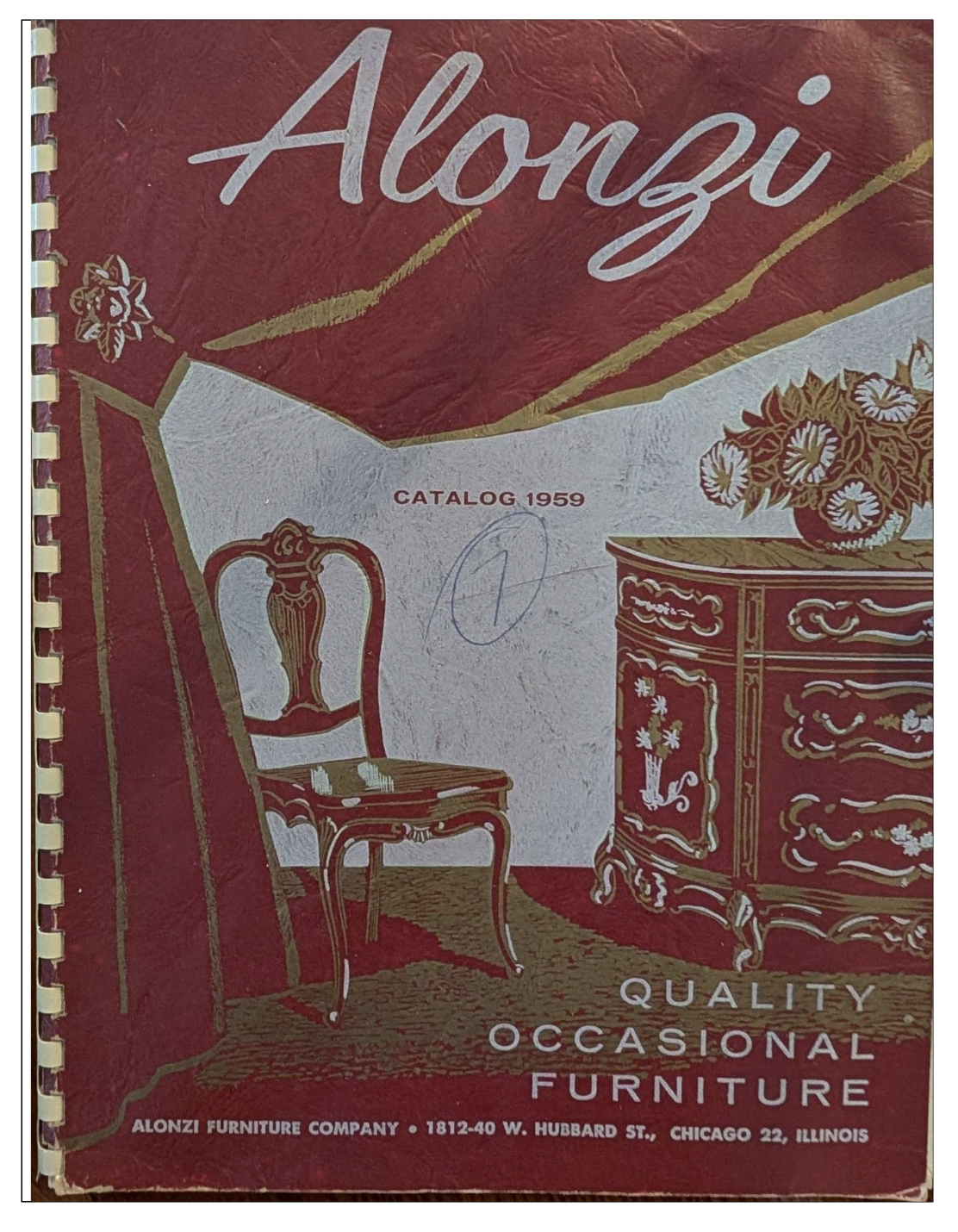
[1959 catalog cover]
